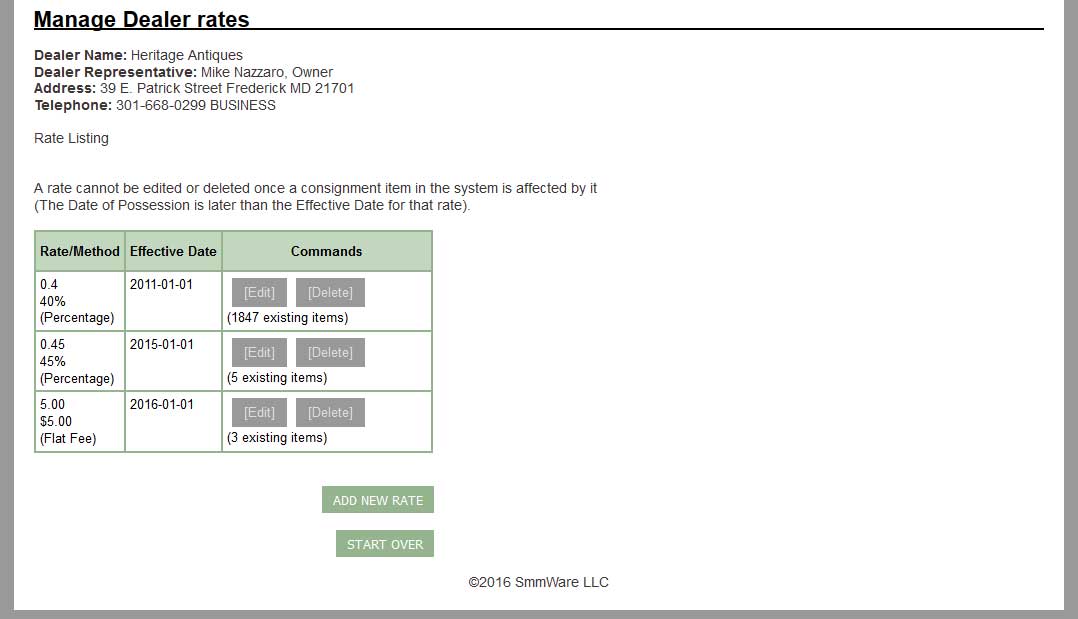The Consignment Menu
These commands are not available to the Basic User.
Consignment Dealers are Organizations that have been assigned to the category “Consignment & Retail”
| Watch our YouTube video about Consignment Sales at https://youtu.be/LW3jQaOsVx4 (if this link is broken because we’ve posted a new version, go to our channel at https://www.youtube.com/SMMware to get to the new video) |
Consignment Report
This command allows you to see all items presently with various Consignment Dealers. You can filter the items based on the client, the dealer, and a date range that compares against the date of Dealer Possession.
You can sort the resulting listing first by Client and then by Dealer or vice versa using the Sort Order radio buttons.
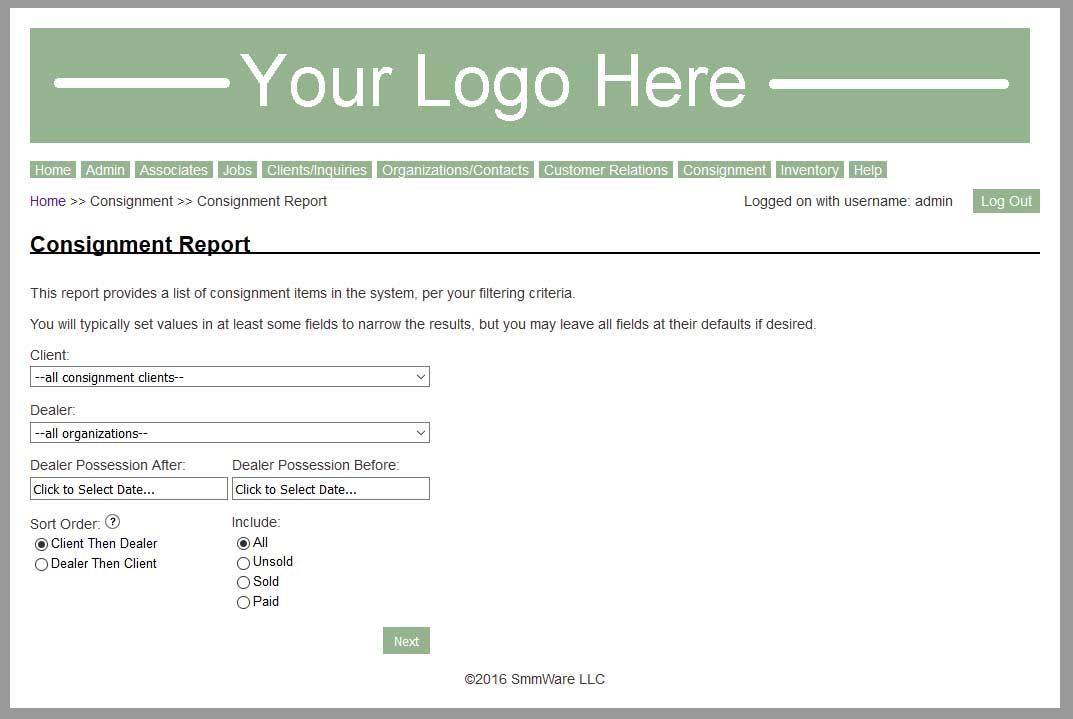
You can further limit the output based on the item status of Unsold, Sold, Paid, or All.
You can leave all the filtering fields at their defaults if desired.
The report provides a variety of detail on the item, from the item number assigned to it by the dealer, to its present status.
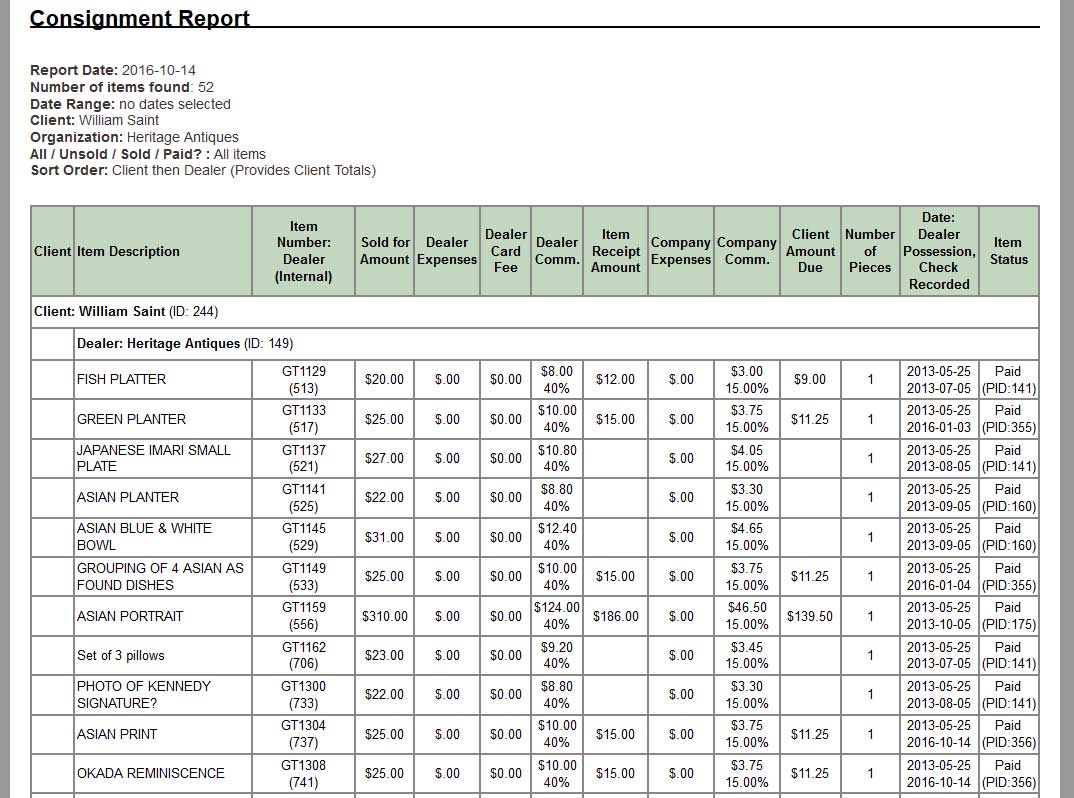
Item Administration
This command allows you to enter consignment items into the system.
Screen 1, selection: You must select at least on of the two dropdowns, Clients and Dealer. Then click next.
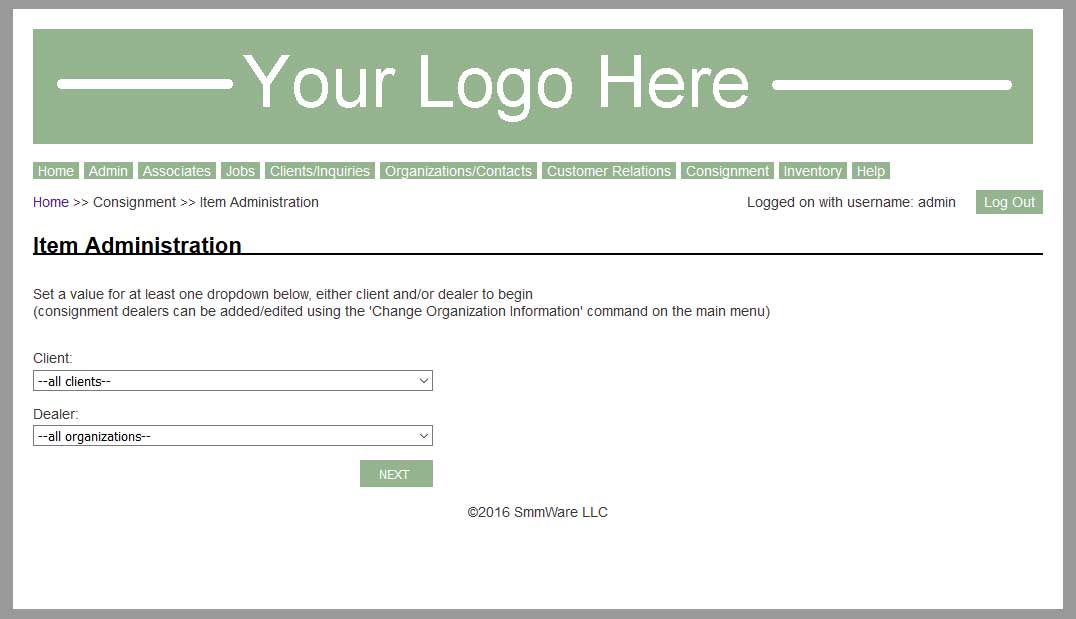
Screen 2, listing: Displays a list of existing items. Click the “New Item” button to add items.
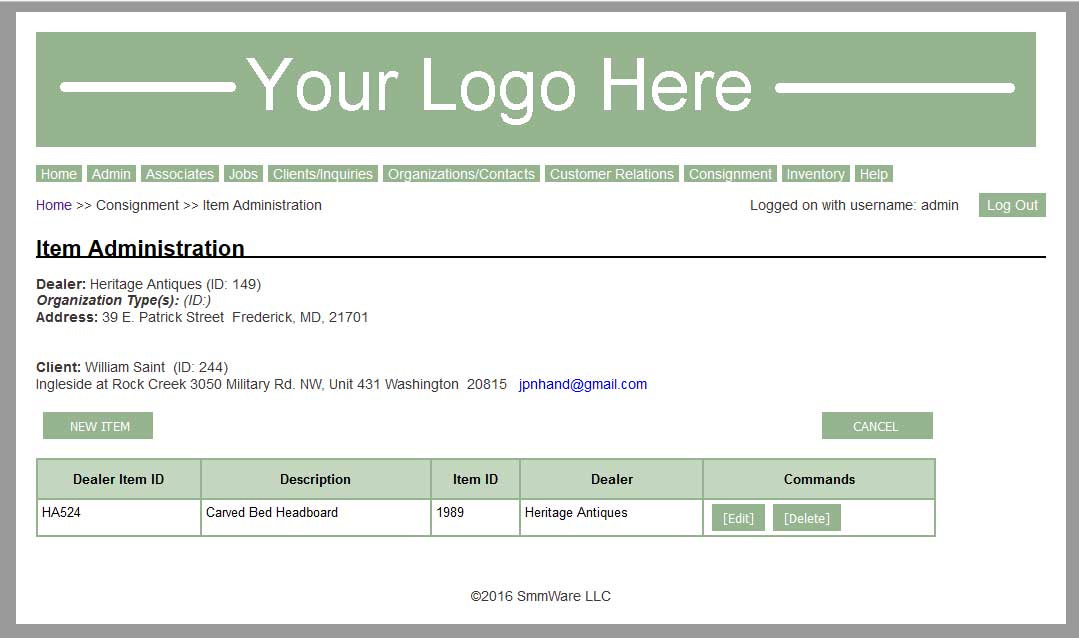
Screen 3, new/edit: Most of the fields are self explanatory. The initial price could also be labelled as “Estimated Value”, the point being that the sold price may be lower.
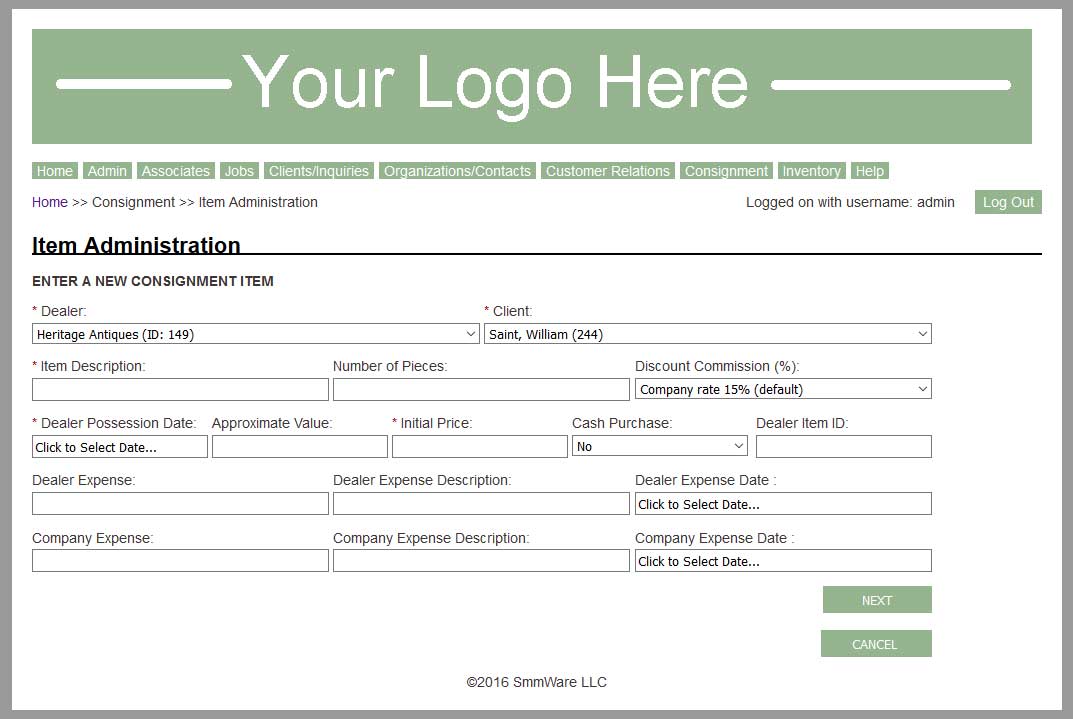
Sometimes instead of taking an item on consignment, dealers will buy it outright. In that case, you can switch the “Cash Purchase” dropdown to “yes”. In that case, dealer expenses and commission do not apply.
The Discount Commission could also be thought of as “Company Commission”. The dropdown lists the normal options but there is a default setting.
Record Dealer Payments for Items Sold
Typically a dealer does not send a separate check for each item sold, but rather sends one for a given period of time, covering multiple items. Or they send a check when the amount they owe you reaches a certain amount.
Therefore the system is built with the expectation that the checks you receive will cover multiple items, The first screen for this command asks you to indicate which dealer is involved, the date of the check and the amount of the check. Even though the next screens deal with the individual items and their amount, the total is asked for here so that the system has enough information to verify the calculations.
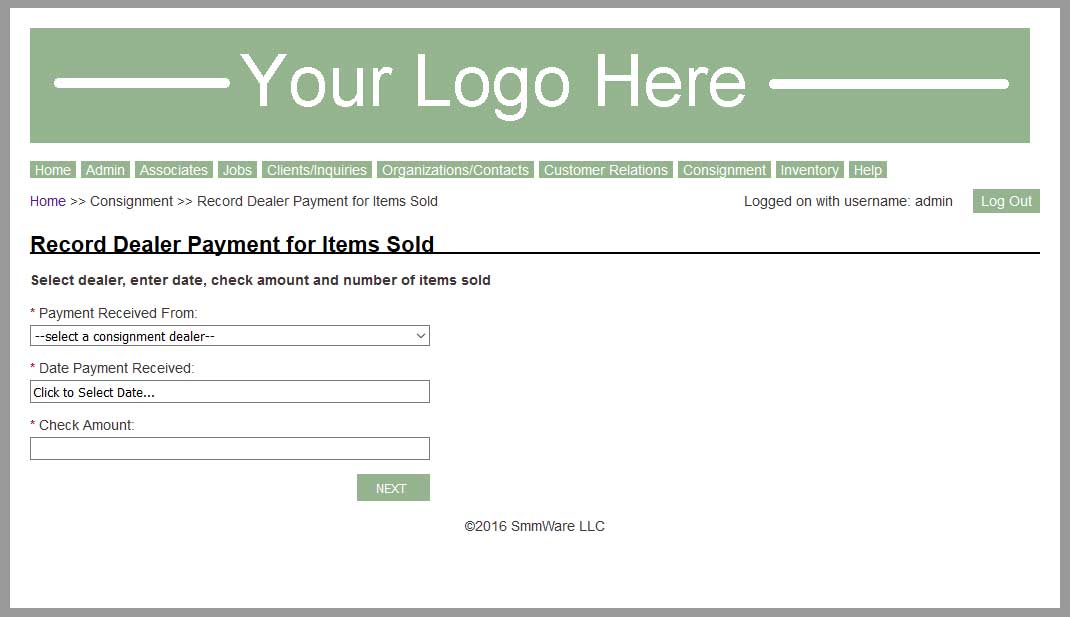
The next screen lists all items presently with the dealer. For those items which have sold, you enter the ‘sold for’ amounts in the text fields. When all items have been accounted for, click “Next” at the bottom of the screen.
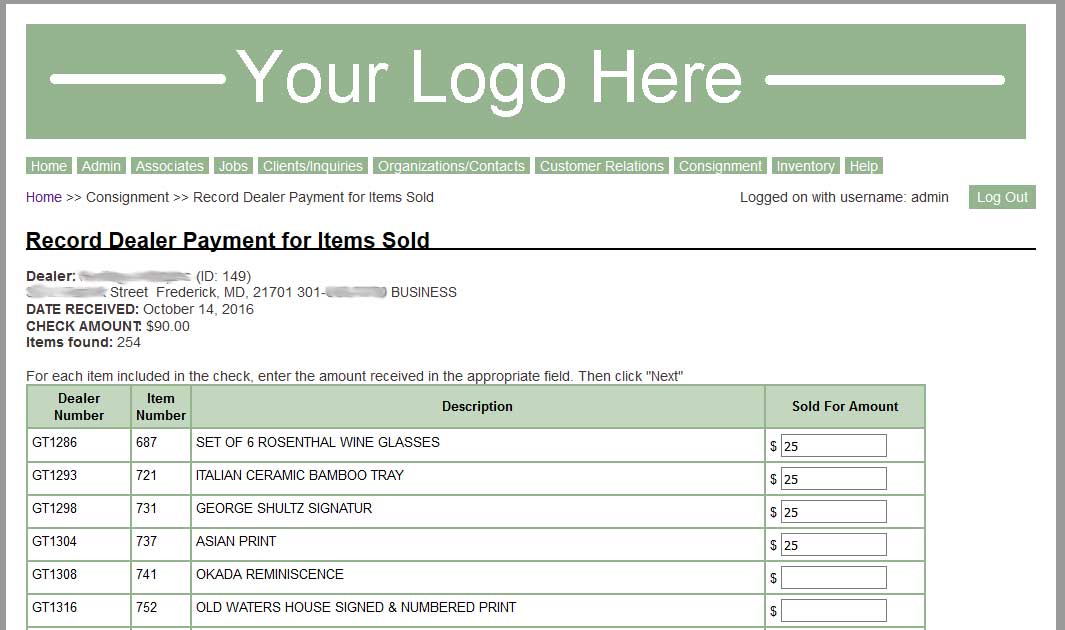
On the Review screen next, the various numbers are calculated per item, including expenses, commissions, and amount due to client. At this point, nothing has been recorded to the database. If the numbers all add up, at the bottom of the screen click on the “FINISH” button and the database will be updated.
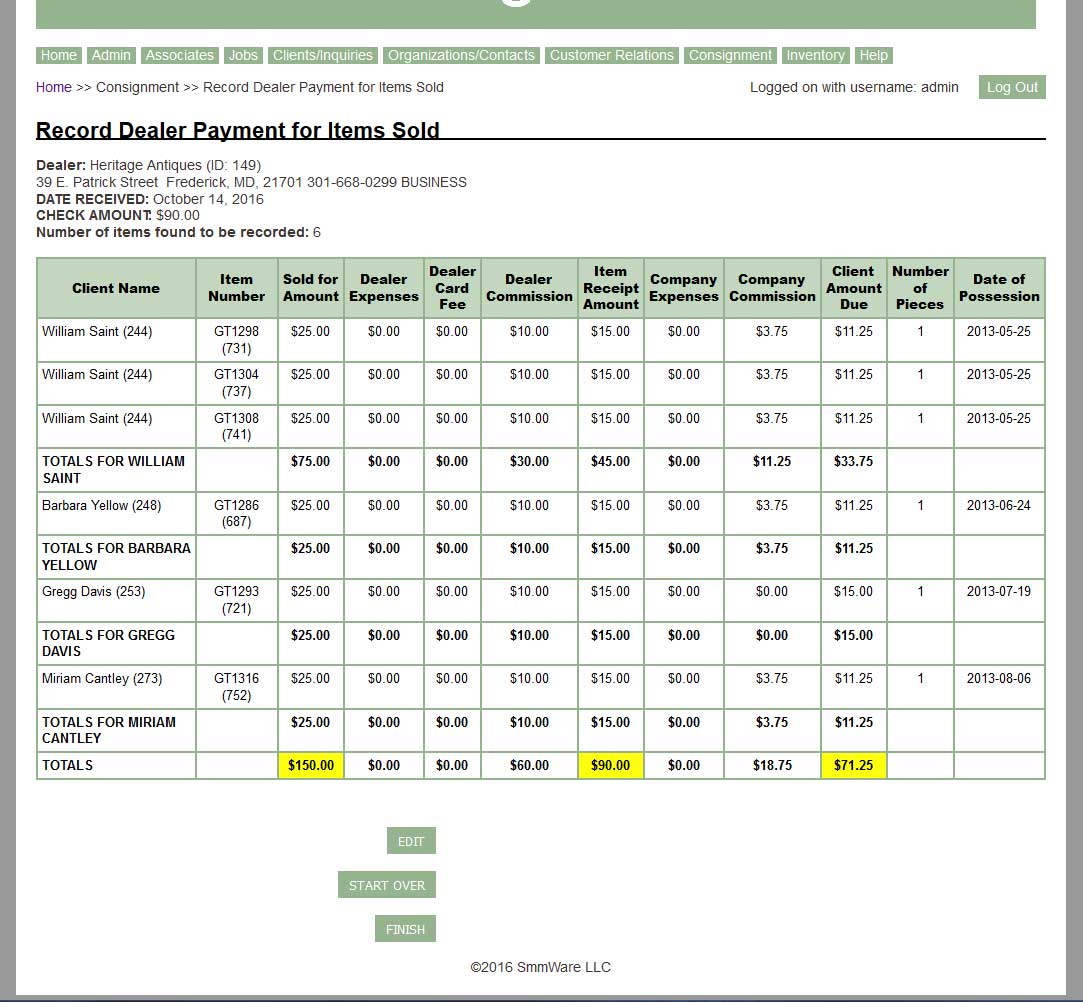
If the numbers did not add up, you will see a message at the top of the screen with some feedback about the problem. In this case, you’ll want to use the “EDIT” button to go back and correct the problem.

Once the numbers are correct and you click “FINISH”, the next screen tells you that the check has been applied to items. At this point, the changes have been saved to the database.
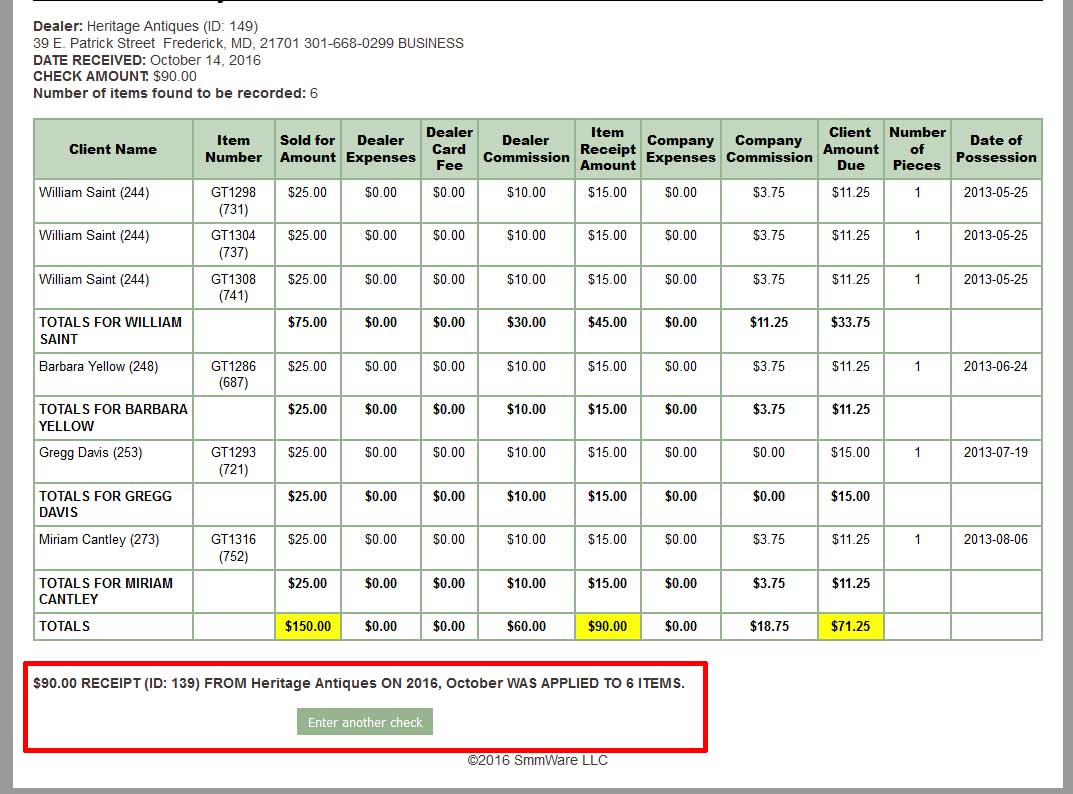
Pay Clients
Once the consignment dealer has paid you, the next step is for you to pay the client.
On the first screen, you can decide to send checks to all clients who are owed by clicking on the checkbox “Pay All”, or you can pick one client from the “Client’s To Be Paid” dropdown. You must also enter the date of payment.
The “Sold On/After Date” and “Sold On/Before Date” dropdowns can be used to filter the output, but can both be left blank if desired.
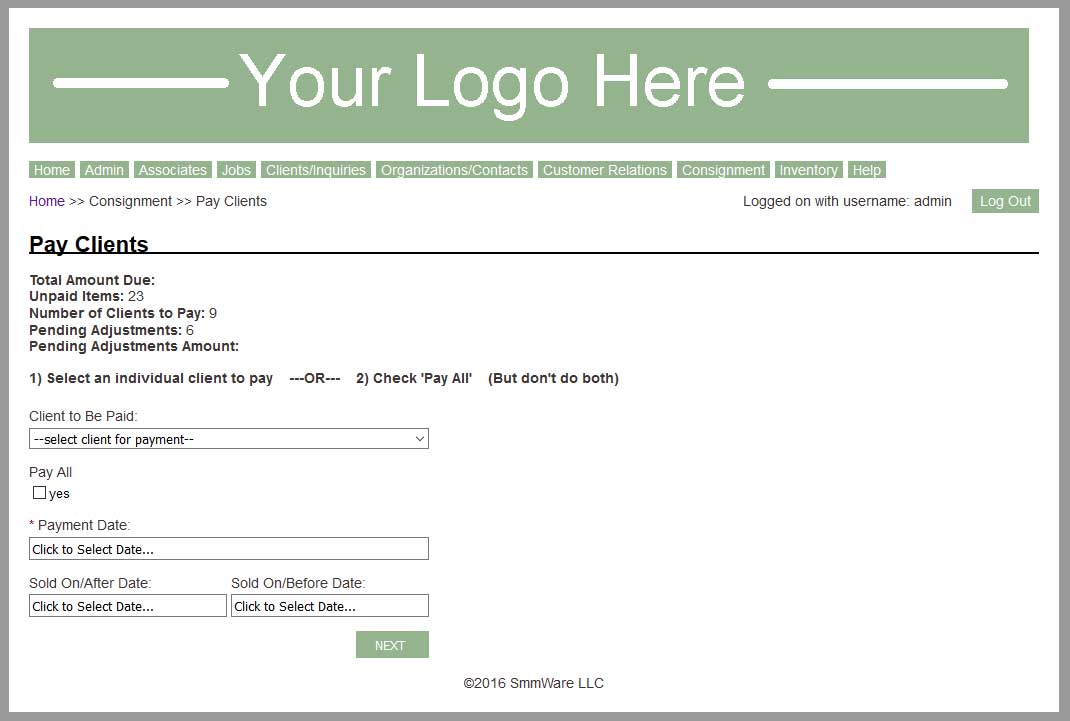
The next screen lets you review the details of the transaction and provides you with the amount due to the client. The screen can contain information for multiple clients if “Pay All” was selected on screen 1.
At this point, the database has not been changed. Click on “FINALIZE” to have the check(s) recorded to the database.
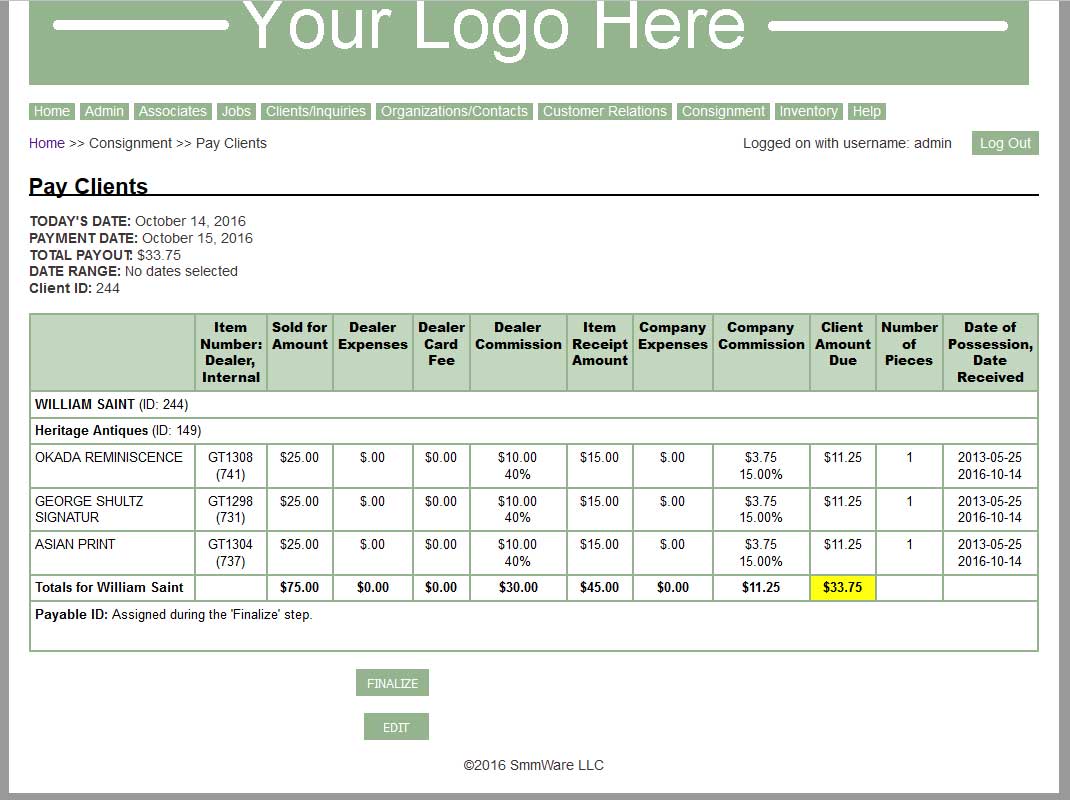
Client Payment Report
This command does not make changes to the database, it allows you to review checks for clients that have been created in the past. Each check is labelled with a “Payment ID”.
On the first screen, you can set a client and a date range for display. And then click NEXT. You can, if you like, leave all the filters at their default values.
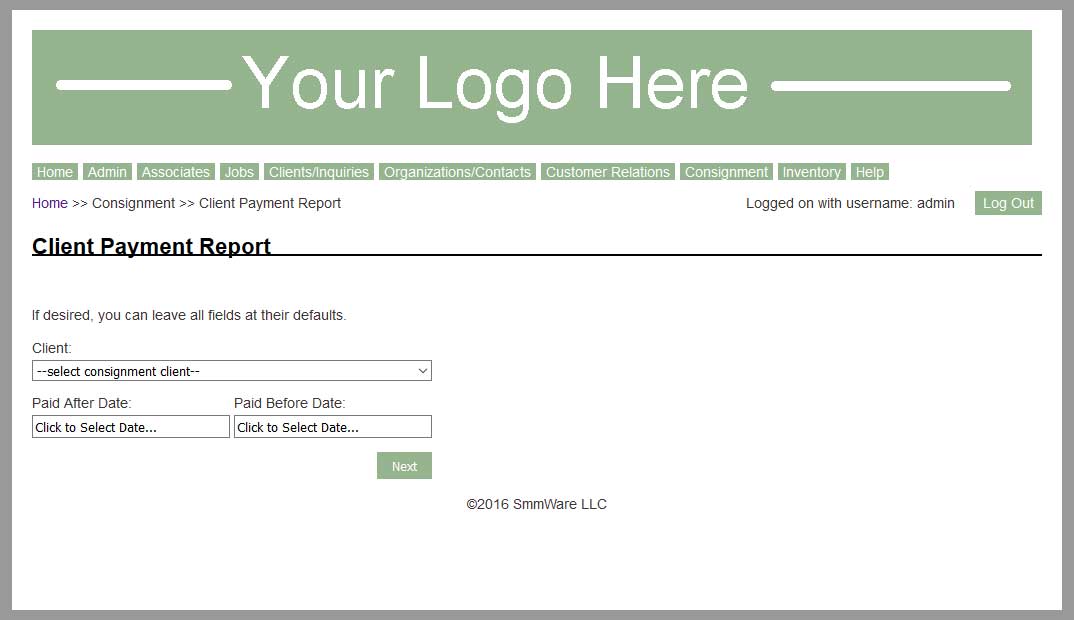
On the second screen you will see details about the different payments made to clients. This report can contain details for multiple clients if the client dropdown from screen 1 was left at the default.
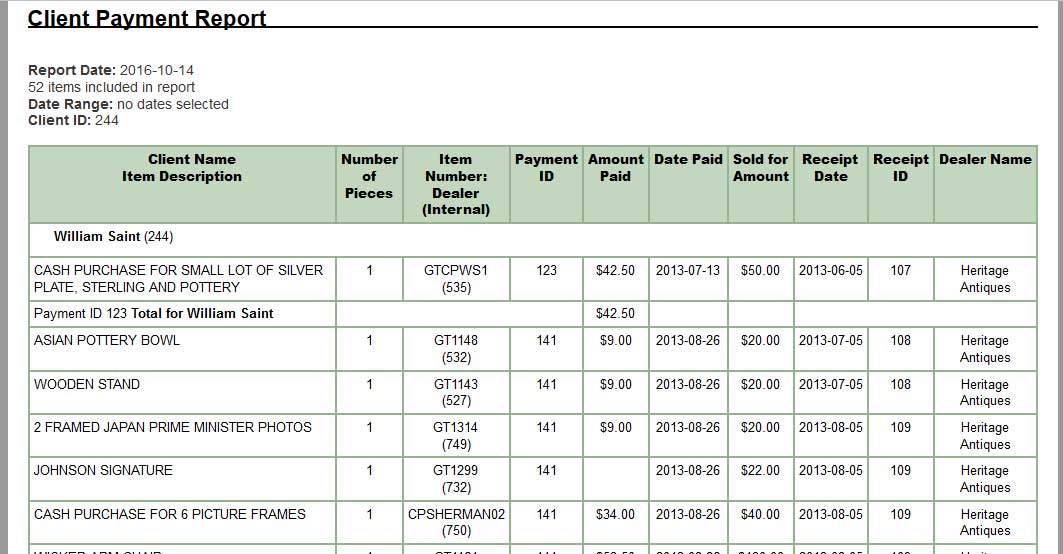
Adjust Client Payment
Sometimes it is necessary to adjust how much the client is paid separate from how much the item was sold for. This command lets you handle that. The next time you set up a check to pay this client for consignment items, the adjustment will be added to the total.
First on screen1, select the client.
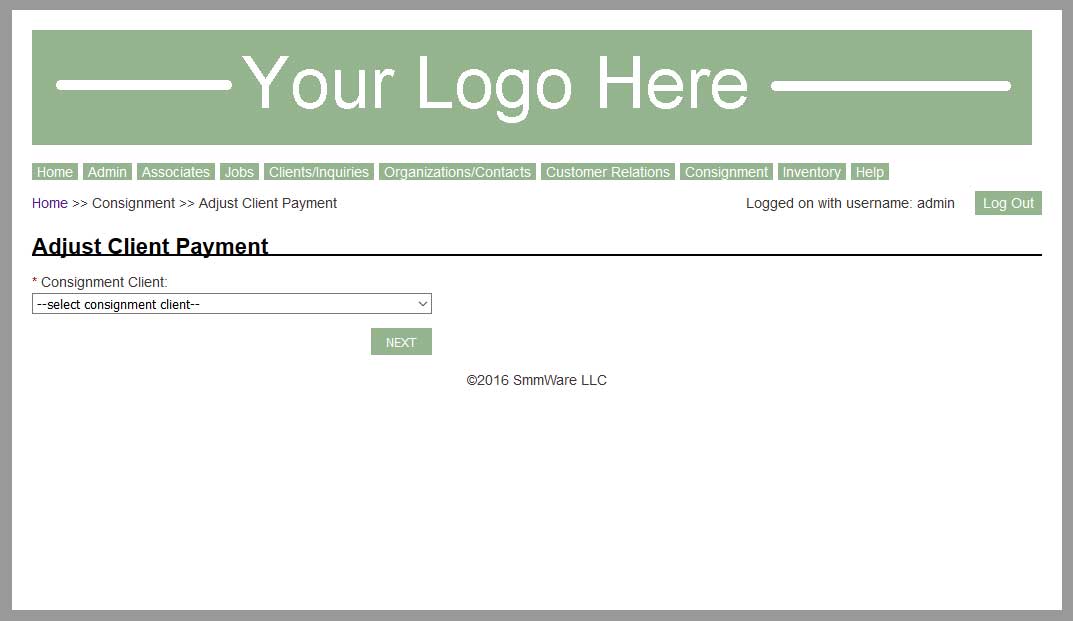
The second screen starts with a listing of any existing adustments. To create another adjustment, click on the “Add New” button.
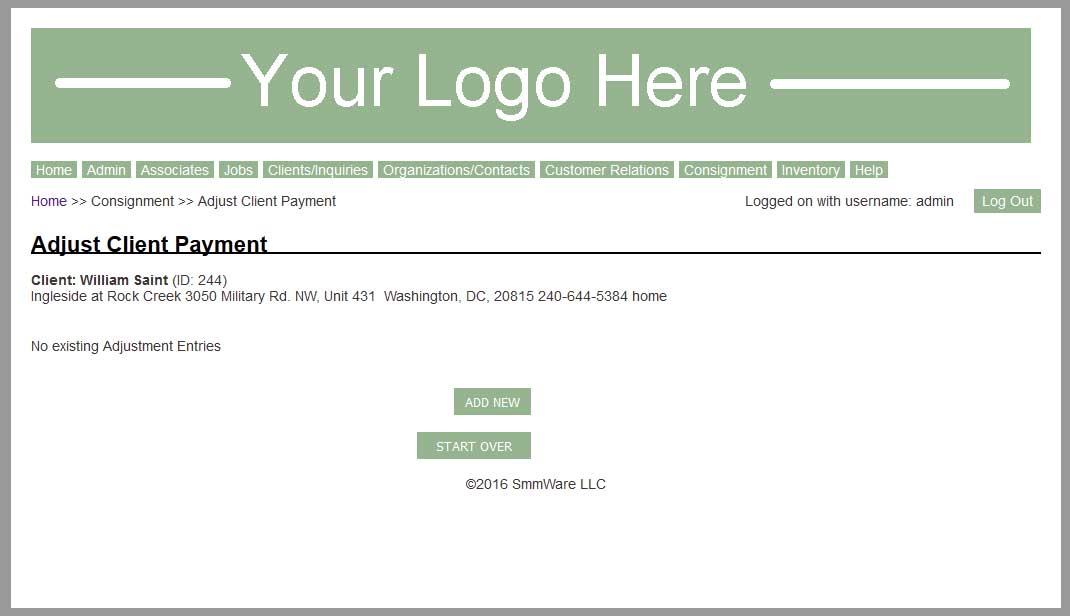
Each adjustment consists of the amount of the adjustment, plus a text description why the adjustment is being offered.
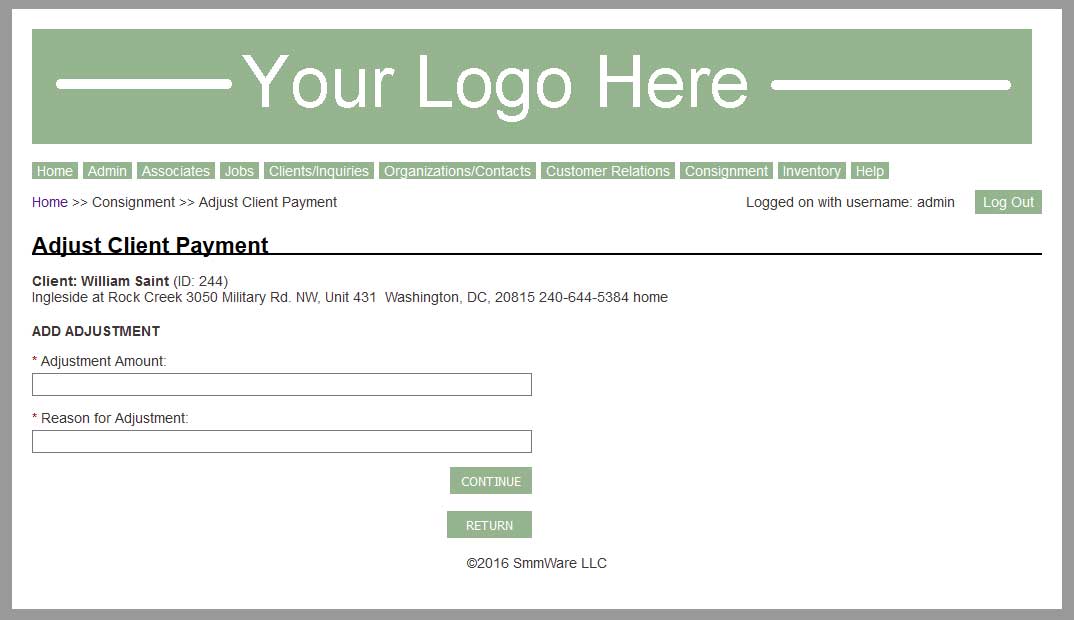
When the adjustment is complete, you can return to the main screen and see the new adjustment listed.
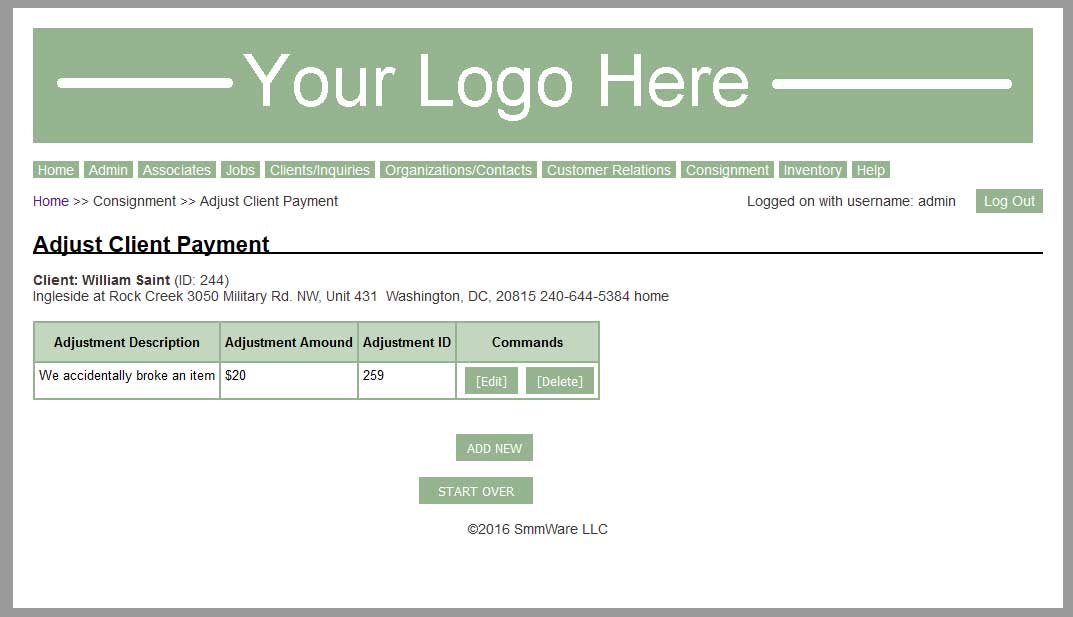
Manage Dealer Rates
SMMware keeps a history of the commission rates charged by dealers, to maintain accuracy as rates change over time. The initial screen shows a list of dealers and the commission rates they are charging. Rates can be either a percentage or a flat rate. Click on the “View History / Edit Rates” button to work with an individual dealer.
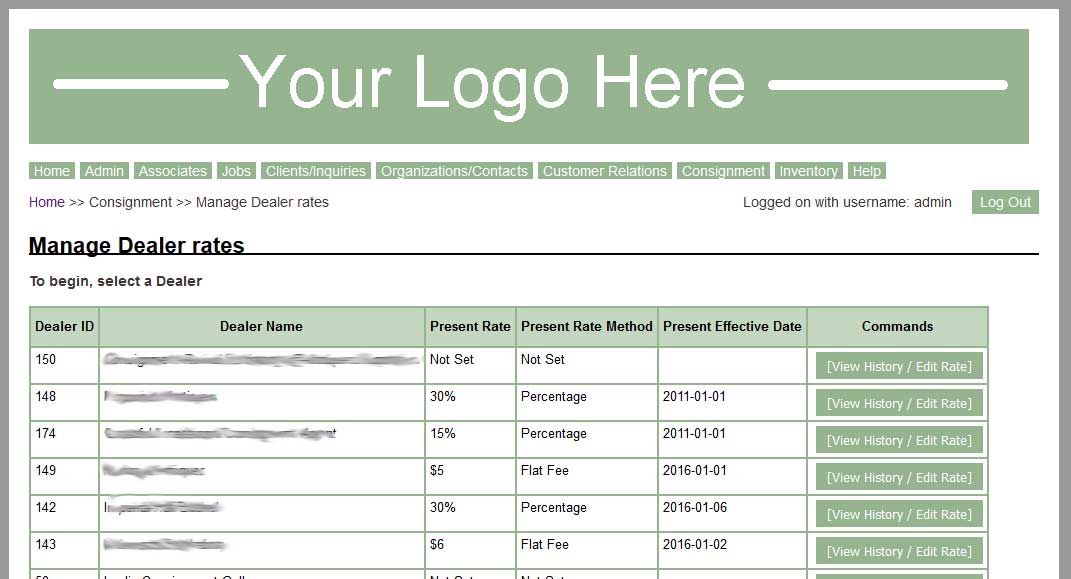
The dealer screen shows you a history of rates. If a rate has been set but not yet been used, you can edit or delete it. However, once a consignment item has used a given rate, those buttons will be greyed out. You can still add a new rate. The effective date for a new rate must be later than the last date (no inserting a new rate into the middle of the history).
